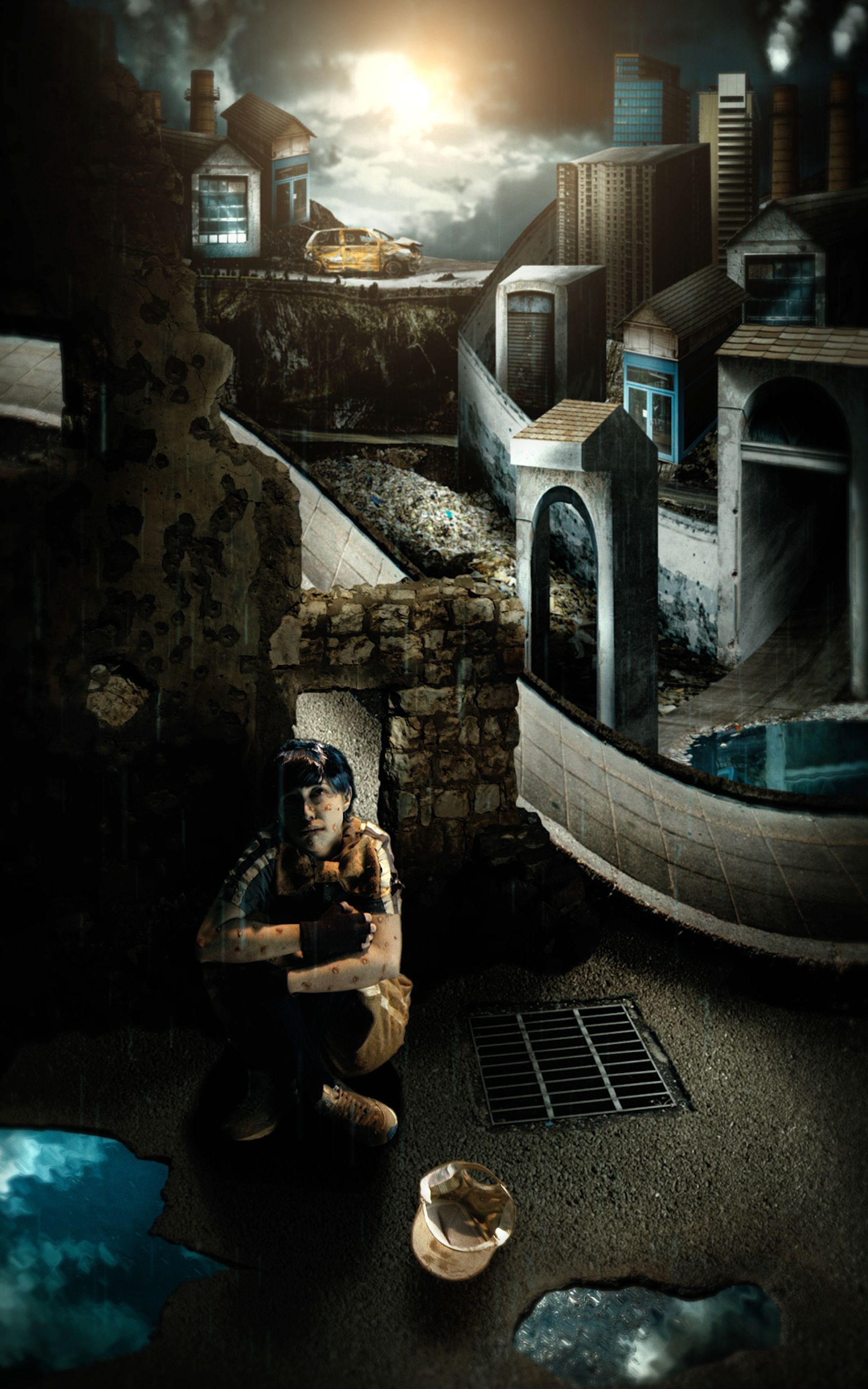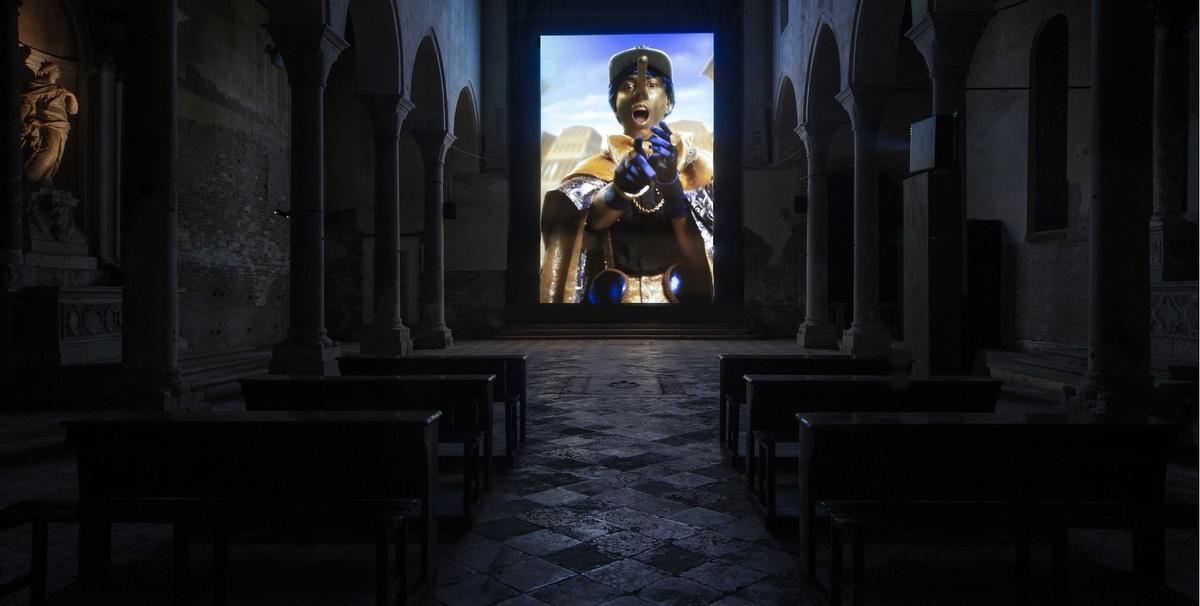When The Art Newspaper first spoke to Rachel Maclean about her Scotland + Venice commission for the 2017 Biennale, she anticipated that it might be an extension of her earlier films and photographs exploring fantastical, fairy-tale and clichéd images of Scottish identity, The Lion and the Unicorn and I ♥ Scotland. Presciently, the latter, made in 2013, included a Donald Trump-like figure. Back then he was merely symbolic of corporate greed—a golf-club wielding, saltire-faced, frightwig-sporting ogre, enacted, like all the figures in her work, by Maclean herself.
But in early December, Maclean visited Venice and her ideas shifted: Spite Your Face (2017), her film for the Biennale, has a wider political target. “Because I went to Venice for about a week or so to write a script for it, and it was shortly after Brexit and shortly after the American election, I was quite interested in this political landscape and the rise of nationalism and the ‘alt-right’ and something that was larger than specifically Scottish nationalism,” she says. “The kind of world that I have created in the film is similar to other films in the sense of not being a specific place, but being many places at once. And I was looking quite a lot, being in Venice, at heaven and hell—the sense of an above world and a below world.” She adds that she wanted the world conjured by the film “to reference Venice and its architecture, but also parts of it to feel a little bit like Glasgow, and other parts reference other popular-culture utopias and dystopias”.
Maclean has a knack for creating such distinctive atmospheres. It’s What’s Inside that Counts (2016), her recent film shown at HOME in Manchester and Tate Britain, was a typically seductively grotesque critique of online consumption, selfie culture and the corporations that feed it; nauseatingly candy-coloured and darkly apocalyptic. In that film, there are several noseless, bright-yellow characters based on online emoticons. “The last film was all about characters with no noses, so I got quite obsessed with the presence and absence of noses,” she says with a laugh. “And in Venice there’s a lot of merchandise about Pinocchio. I got quite interested in that fairy tale and how I could use that to talk about ideas and the political idea of post-truth, and something about current political situation.
“So the film takes in part of the narrative of Pinocchio and follows Pinocchio-like characters who encounter situations where a normal sense of what is true and what is false is confused, and so [the viewer’s] sense of what are lies and what are truths becomes confused as well. I like that in my work: to have a fairy tale or narrative that structures the other things you can build up around it.”
Does her Trump-like character reappear? “It’s more allusive,” she replies. “You can pick up on certain things or certain tropes in political characters, but I didn’t want there to be somebody who, for example, directly referenced Trump or directly referenced a recognisable political figure. I wanted the characters to feel a little bit more like an amalgam of different characters and different ideas. Within my previous work, the characters are quite slippery and seem to change and shift quite rapidly from young to old, and from quite benign, naïve characters to those with agency and often quite violent behaviour.”

Venice has also added a richness to the film’s colour palette. “It feels like everything in Venice glitters; the canals glitter and there’s this whole luxury goods industry, and luxury department stores and the feeling of shop windows with expensive things glittering,” she says. “Certain colours and the references are much more Baroque and less children’s television and less internet emoticon—there’s a little more of Venice in that sense.”
Showing in the deconsecrated Chiesa di Santa Caterina in Cannaregio adds to the installation’s ambience. “It was really nice to be able to pick a venue in Venice and find somewhere that was so specific and had such an aura about it before you even put anything in there,” she says. “I filmed the entire work in portrait format, which is really nice and fits really well for films that are largely about figures and figures fitting into frames. Instead of the left-right space of conventional film, it allows me to play with the idea of above and below and to be able to have that as a kind of narrative idea in the film.”
A huge portrait-format work in a church also conjures some of the city’s great altarpieces, like Titian’s vast masterpiece depicting the Assumption of the Virgin in the Basilica di Santa Maria Gloriosa dei Frari. Like that great painting, Maclean’s film is placed directly in front of the altar, which, Maclean says rather understatedly, “should look quite dramatic and alter the space of the church as well”.
But with that duality that Maclean so enjoys, the screen also evokes a distinctly 21st-century phenomenon. “You see on occasion the characters with tablets and phones,” she says, “and the world of the film is quite confused, in that in part you feel like you might be in a medieval city and then in other parts you feel like you might be in a contemporary world with phones and connectivity. I wanted to play with that—the portrait format plays with the idea of the phone or the tablet, or with the altarpiece or traditional paintings with depictions of heaven and hell. I want it to feel like it’s of two different worlds or time periods.”
• Rachel Maclean, Scotland + Venice, Chiesa di Santa Caterina, Cannaregio, 13 May-26 November


